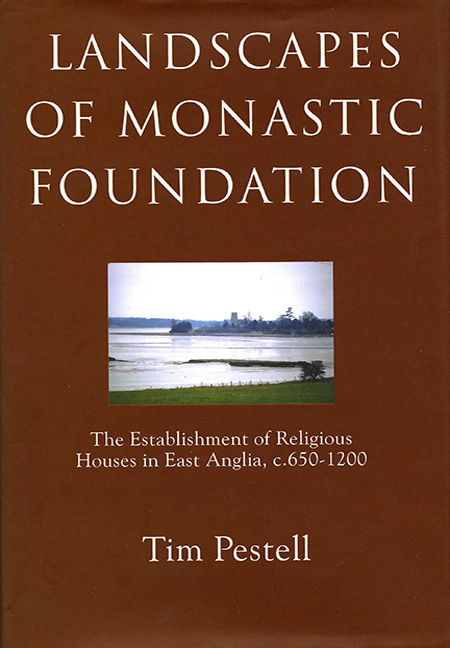Book contents
- Frontmatter
- Contents
- List of illustrations
- Acknowledgements
- Abbreviations
- 1 Introduction: Past and Present Approaches to Monastic Studies
- 2 Monasticism in Middle Anglo-Saxon East Anglia
- 3 The First Viking Age and its Consequences for Monasticism in East Anglia
- 4 Monastic Reform and Religious Life in the Later Anglo-Saxon Period
- 5 The Establishment of Monasteries in the Norman Landscape
- 6 Conclusions
- Bibliography
- Index
1 - Introduction: Past and Present Approaches to Monastic Studies
Published online by Cambridge University Press: 11 May 2017
- Frontmatter
- Contents
- List of illustrations
- Acknowledgements
- Abbreviations
- 1 Introduction: Past and Present Approaches to Monastic Studies
- 2 Monasticism in Middle Anglo-Saxon East Anglia
- 3 The First Viking Age and its Consequences for Monasticism in East Anglia
- 4 Monastic Reform and Religious Life in the Later Anglo-Saxon Period
- 5 The Establishment of Monasteries in the Norman Landscape
- 6 Conclusions
- Bibliography
- Index
Summary
That monasticism constituted a major influence upon the Early Medieval landscape has never been in doubt. Much has been written about how certain orders, notably the Cistercians, exploited their landholdings and still more orthodox has been the view that monasteries sought isolated or reclusive positions within the countryside. This perspective has undoubtedly been aided by the writings of ecclesiastics themselves, for instance, the Peterborough monk Hugh Candidus. Writing in the early twelfth century, he suggested that the islands of the Fens ‘I believe God himself raised, with the intention that it should be the habitation of those servants of God who had chosen to dwell there.’ Sentiments such as these burned deeply in the monastic psyche. Curiously, they have received relatively little critical investigation by scholars, despite advances in landscape studies that have shown how landscapes could be actively structured in symbolic and iconographic ways. Instead, monastic studies have tended to remain innately conservative, frequently following research agenda derived from the earliest, antiquarian, investigation of monasteries. It is notable, for instance, that in several recent synthetic works about monasteries, discussion has centred upon the construction and development of the physical church, cloister, and precinct outbuildings. Theoretically-informed approaches such as Roberta Gilchrist's application of a gender-archaeological analysis to nunneries remain an important exception, but the wider landscape into which a monastic foundation was made has usually been considered only in terms of case-studies of individual houses. This book attempts to redress such a regrettable situation by studying the patterns of monastic foundation in an entire region, that of East Anglia. Examples of the particular are examined from a wider perspective, to see how a cenobitic existence was practised or produced its own distinct material culture, how typical patterns in house location really are, and equally importantly, how these patterns may relate to wider questions of social and political geography.
If there has been a lack of critical investigation into the wider landscape setting of monasteries, an equally fundamental problem has been the chronological division usually adopted in monastic studies. Communal religious life did not begin at the Norman Conquest but because only a small number of Anglo-Saxon monasteries have left more than ephemeral material remains archaeologists have frequently concentrated on that which was more easily visible.
- Type
- Chapter
- Information
- Landscapes of Monastic FoundationThe Establishment of Religious Houses in East Anglia, c.650–1200, pp. 1 - 17Publisher: Boydell & BrewerPrint publication year: 2004



